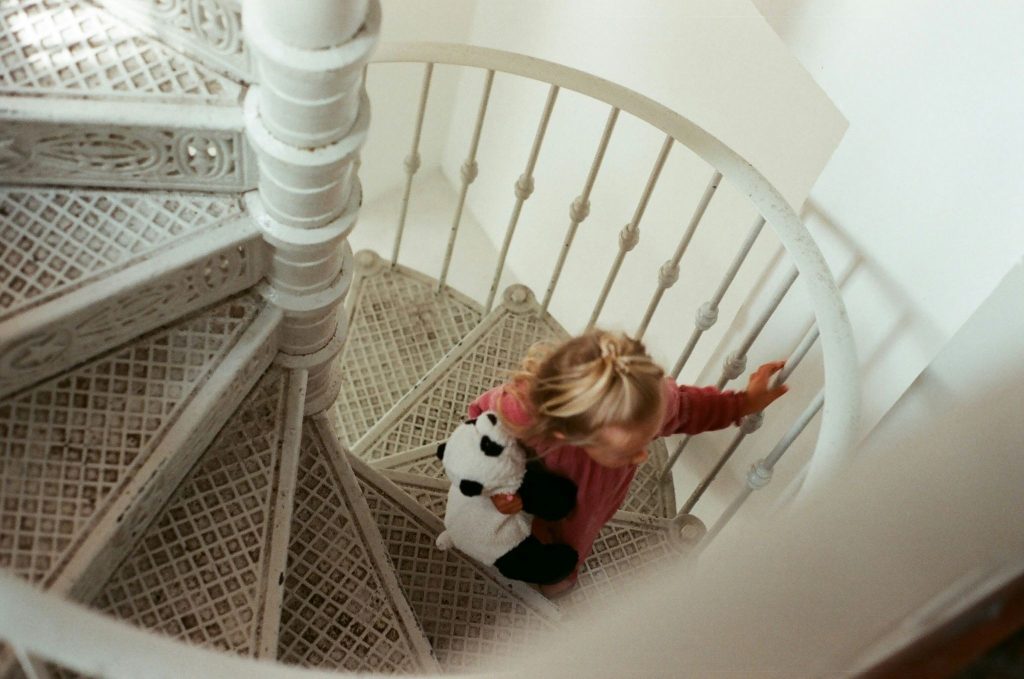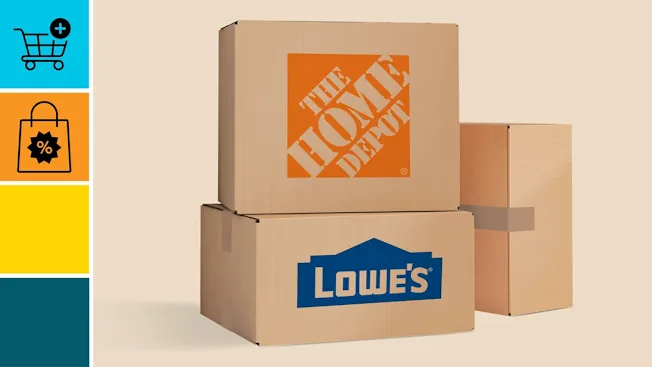
Keeping toddlers safe at the top of a staircase is one of the highest-priority childproofing tasks for parents and caregivers. A properly chosen, installed, and maintained baby gate prevents falls and gives adults peace of mind.
This guide walks through the best types of baby gates for the top of stairs, explains must-have safety features, compares leading styles, and helps you pick the right model for your home and child.
Quick recommendations (TL;DR)
- Best overall (top of stairs): Pressure-mounted plus hardware-lock gate with a top-mounted locking mechanism and wall-anchor reinforcement.
- Best for angled or irregular stairs: Adjustable telescoping metal gate with hardware installation options.
- Best for frequent adult traffic: Auto-close hinge, one-hand release with a high latch.
- Best for narrow openings: Slim swing gate with high top rails and secure hardware.
- Budget pick (top of stairs): Basic hardware-mounted metal gate — avoid pressure-mounted models at the top of stairs.
Why the top of stairs is different

Gates used at the top of stairs face more risk than those at the bottom or between rooms. A child leaning or pushing the gate near a downward drop can fall a long way. Because of that, safety authorities and manufacturers strongly recommend hardware-mounted gates for the top of stairs—pressure mounts can fail if the child pushes or pulls. Look for gates specifically labeled as acceptable for the top of stairs.
(Throughout this guide I’ll also use the term stairway safety gate interchangeably — a useful alternate search term when comparison shopping.)
Key safety features to require
- Hardware mounting — bolts or brackets anchored into wall studs or strong frame: non-negotiable for top-of-stairs use.
- Height — generally at least 30–36 inches; tall toddlers and climbers need taller gates.
- Small spacing — vertical slats or mesh without openings larger than ~2–3 inches to prevent head/limb entrapment.
- Secure latch — childproof latch that adults can operate easily (preferably one-handed) but cannot be opened by a toddler. Top-mounted latches reduce climbing.
- Stability — a gate with minimal wobbly movement when shaken. Reinforcement brackets are a plus.
- No climbable footholds — horizontal bars positioned so they don’t form steps for climbing.
- Smooth hardware and rounded edges — to avoid catches and injuries.
- Certification / compliance — meets ASTM F1004 (US) or relevant national standard; labels vary by country.
Types of gates and why some are better for the top of stairs

- Hardware-mounted metal gates (recommended)
Pros: Extremely secure when installed correctly; durable.
Cons: Permanent installation (holes in trim/wall), usually more expensive. - Wall-mounted wooden gates (acceptable with proper hardware)
Pros: Aesthetic, blends with decor.
Cons: Can be less durable than metal; ensure strong mounting and proper latch. - Pressure-mounted gates (not recommended for top of stairs)
Pros: No drilling, easy to move.
Cons: Can detach under push/pull forces — unsafe for top of stairs. - Retractable fabric gates (use with caution; hardware-mounted variants preferred)
Pros: Low profile, nice look.
Cons: Must be hardware mounted for top of stairs; fabric must be sturdy and free of gaps. - Expandable/telescoping gates
Pros: Fit odd widths and angles; some designed for irregular openings or multiple wall angles.
Cons: Complexity in installation; ensure hardware kit includes robust anchors.
Comparison table — top picks for the top of stairs
| Gate type / model style | Mounting | Height (typical) | Best for | Pros | Cons |
| Heavy-duty hardware-mounted metal gate | Hardware | 30–36 in | Most homes; active toddlers | Very secure, durable, narrow slat spacing | Requires drill; more expensive |
| Adjustable telescoping metal gate (angled) | Hardware (angled brackets) | 30–36 in | Irregular or angled stair tops | Fits odd widths/angles, strong | Installation trickier; pricier |
| Hardware-mounted wooden gate with top latch | Hardware | 30–36 in (often 36 in) | Aesthetic homes | Warmer look, secure when mounted | Wood can dent; check latch durability |
| Retractable stairway safety gate (hardware mount) | Hardware (recommended) | Variable; retracts | Sleek design, low profile | Space saving, unobtrusive | Retractable fabric must be very durable |
| Slim swing hinge gate (narrow openings) | Hardware | 30–36 in | Narrow staircases | Minimal swing, tight fit | Some models need exact fit; hinge maintenance |
| Dual-mount convertible gate (pressure + hardware) | Hardware recommended for stairs | 30–36 in | Temporary installs but used with hardware | Versatile; hardware uses exist | If pressure mounted only — unsafe for top stairs |
Note: The table lists styles and general properties. When selecting a specific product, confirm the model is explicitly rated for top of stairs or both top & bottom use, and that the manufacturer includes hardware for wall mounting.
How to measure and choose the right gate
- Measure opening width — width at the narrowest and widest points (top and bottom if sloped). If you have trim, measure from the face of trim where the gate will mount.
- Measure depth / landing constraints — consider how much swing room you have for a swinging gate; some gates open both directions.
- Check for studs — locating studs lets you anchor hardware into wood rather than drywall alone (use a stud finder). If studs aren’t on the ideal spots, use heavy-duty wall anchors rated for the gate’s load.
- Pick height — choose a height taller than the child’s reach when standing on tiptoe. For aggressive climbers, 36–42 in may be safer.
- Accessibility — if you often carry a baby or groceries, pick a gate with a one-hand operable latch and reliable auto-close (optional) — avoid overly complex multi-step latches.
- Material and finish — metal for durability, wood for aesthetics, retractable fabric for low profile. Avoid flimsy plastics at the top of stairs.
- Angle adaptability — if the stair meets the hallway at a corner or slope, a telescoping or corner-friendly gate is preferable.
Installation tips for maximum safety
- Always follow manufacturer instructions; hardware mounting is required for top-of-stairs installation.
- Use the included bracket kit; if the kit lacks long enough screws for your stud depth, upgrade to appropriate screws (consult a hardware professional).
- If mounting into drywall without a stud, use heavy-duty toggle anchors specifically rated for shear load.
- Mount brackets at the recommended heights—top latch should be out of reach of toddlers.
- After installation, perform a pull test (firmly pull on the gate) and a shake test to confirm stability.
- Inspect monthly for loosened screws, latch wear, or damage. Tighten hardware as necessary.
- Never place furniture or objects near the gate that a child could climb to access the top of the gate.
- If your home has unusual trim or baseboard, consider mounting blocks to create flat mounting surfaces.
Maintenance and safety checks
- Inspect latches and hinges for wear; replace parts per manufacturer guidance.
- Keep the area free of toys or other objects that could prop the gate open.
- Replace the gate when it shows structural damage, bent bars, or if the latch fails.
- Confirm compliance with current safety standards when buying used — older gates might not meet modern safety rules.
Pros & cons summary (short)
Pros of hardware-mounted gates for top of stairs
- Highest safety and stability
- Best for active or older toddlers
- Often meet safety standards for stair use
Cons
- More permanent installation (drilling)
- Costlier than pressure models
- May impact home aesthetics if you prefer removable gates
Frequently Asked Questions (FAQ)
Q: At what age can I remove the gate?
A: Gates are typically used until a child consistently demonstrates the judgment and physical control to navigate stairs safely — often around 2–3 years but varies by child. Consider removing gates only when the child can climb stairs safely and reliably under supervision.
Q: Are retractable gates safe for the top of stairs?
A: Retractable gates can be safe if they are designed for stair use and are hardware mounted. Confirm the model’s rating for top-of-stairs use and inspect the fabric and reel mechanism regularly.
Q: How high should a gate be at the top of stairs?
A: Aim for at least 30–36 inches. If your child is tall or a climber, consider taller gates (36–42 inches).
Q: Is a double-gate configuration ever needed?
A: Sometimes two gates are used to create a vestibule at the top of the stairs (e.g., gate at the hallway and another gate at the stair opening). This can be helpful if the stair landing is small and you want an extra buffer zone. Each gate must be hardware mounted and secure.
Q: Can the gate damage my walls or trim?
A: Hardware-mounted gates require drilling. You can minimize cosmetic impact by installing into trim edges, using paintable mounting blocks, or choosing compact mounting hardware. Weigh the tradeoff between minor cosmetic changes and safety.
Final checklist before buying
- Model explicitly rated for top of stairs or both top & bottom.
- Hardware mounting kit included.
- Height ≥ 30 in (long-term, consider 36 in).
- Latch is childproof and easy for adults.
- Materials durable (metal/solid wood/robust retractable fabric).
- Small slat spacing and no climbable features.
- Fits your opening (measure accurately) and accommodates any angle.
Closing thoughts
When it comes to the top of stairs, err on the side of maximum security. Choose a hardware-mounted stairway safety gate that fits your opening, mounts solidly to studs or heavy anchors, and has a dependable, childproof latch. With correct installation and routine checks, the right gate dramatically reduces the risk of a fall and gives you the confidence to move around your home while your little explorer grows.


